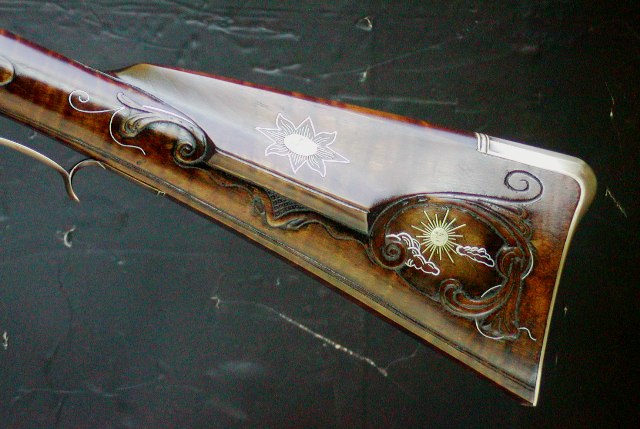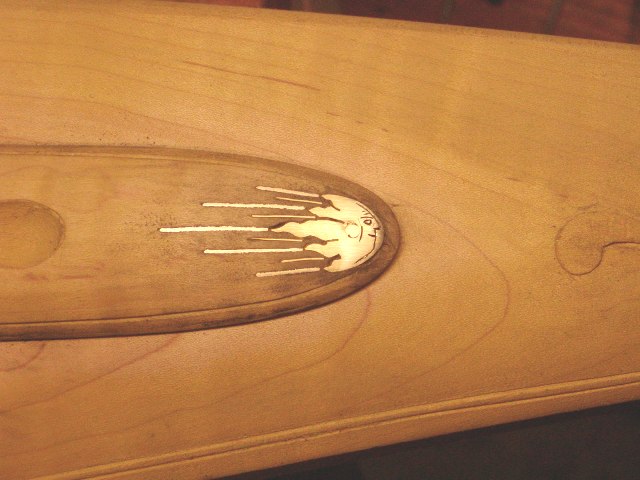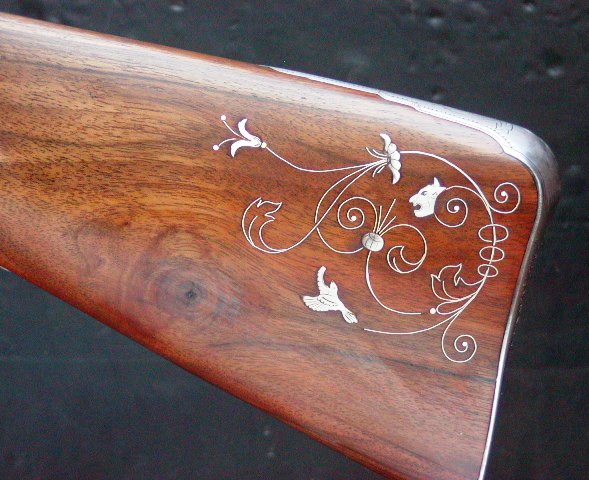- Joined
- Dec 26, 2021
- Messages
- 460
- Reaction score
- 390
When doing your silver wire inlays, do you prefer german silver or the softer fine silver wire ?
Thinking .010 thickness.
Thanks in advance
Bill
Thinking .010 thickness.
Thanks in advance
Bill























That is absolutely stunning work! Thank you for sharing that.Hi,
I don't like German silver for anything. You can use fine silver ribbon and it stays bright longer than Sterling silver because it has only trace copper content. However, the down side is it is softer than Sterling and when you file and sand it flush with the wood, it is best to file or sand along the length of the wire rather than across it, which can leave a slightly ragged, almost smeared appearance if the paper or file are too coarse. Sterling silver is tougher but it does tarnish faster. I use both fine and Sterling depending on my objectives for the art work. Here is an example in which thicker fine silver forms the edges of the clouds giving them a glow against the grayer, thinner Sterling.

The next example shows thick fine silver ribbon that was filed across it with a medium coarse file to make it look a bit ragged like flames.

Here is an example mixing thin Sterling silver wire with fine silver inlays. The bright white inlays pop out against the grayer Sterling, which will become more pronounced as the Sterling tarnishes.

With regard to your question about thickness, it all depends on your objectives. If you are just adding simple accents to carving, 0.008"-0.010" is fine. The thickness will make it look more noticeable. If you intend more complex designs, I suggest thinner wire 0.005"-0.006". If you intend to copy British or European work, then you want the thinnest wire you can get. Usually you have to cut strips from sheet to get really thin stuff in the 0.004-0.005" range or have a rolling mill.
dave
The artistry is amazing! You never see this type of "folk art" or "arts & crafts" featured on TV or in magazines because "A Gun" is involved! The general culture doesn't like anything with "guns" involved. Beautiful, graceful, work!Hi,
I don't like German silver for anything. You can use fine silver ribbon and it stays bright longer than Sterling silver because it has only trace copper content. However, the down side is it is softer than Sterling and when you file and sand it flush with the wood, it is best to file or sand along the length of the wire rather than across it, which can leave a slightly ragged, almost smeared appearance if the paper or file are too coarse. Sterling silver is tougher but it does tarnish faster. I use both fine and Sterling depending on my objectives for the art work. Here is an example in which thicker fine silver forms the edges of the clouds giving them a glow against the grayer, thinner Sterling.

The next example shows thick fine silver ribbon that was filed across it with a medium coarse file to make it look a bit ragged like flames.

Here is an example mixing thin Sterling silver wire with fine silver inlays. The bright white inlays pop out against the grayer Sterling, which will become more pronounced as the Sterling tarnishes.

With regard to your question about thickness, it all depends on your objectives. If you are just adding simple accents to carving, 0.008"-0.010" is fine. The thickness will make it look more noticeable. If you intend more complex designs, I suggest thinner wire 0.005"-0.006". If you intend to copy British or European work, then you want the thinnest wire you can get. Usually you have to cut strips from sheet to get really thin stuff in the 0.004-0.005" range or have a rolling mill.
dave
Enter your email address to join: